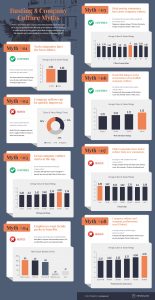Facebook Delivers Ads Based On Race And Gender Stereotypes, Researchers Say
Last week, the U.S. Department of Housing and Urban Development charged Facebook with violating civil rights laws that prohibit discriminatory housing ads.
The government’s complaint included the allegation, which is familiar by now, that Facebook’s targeting tool allows advertisers to block their ads from people based on their race, religion and gender.
But the complaint also included a more surprising allegation, centered on Facebook’s ad delivery system. Specifically, the government alleged that the ad-delivery system discriminates based on characteristics like race and gender — even when advertisers don’t want to do so.
“Even if an advertiser tries to target an audience that broadly spans protected class groups, Respondent’s ad delivery system will not show the ad to a diverse audience if the system considers users with particular characteristics most likely to engage with the ad,” HUD says in its complaint.
Now, a new paper — “Discrimination through optimization: How Facebook’s ad delivery can lead to skewed outcomes” — by researchers at Northeastern University, the University of Southern California, and the advocacy group Upturn sheds more light on the allegations.
In essence, the researchers say Facebook’s ad-delivery system sends ads to particular individuals based on whether the ads will be “relevant” to them. But that determination can turn on stereotypes.
For the report, researchers ran a variety of ads across Facebook, and then determined the likely gender and race of the people who were served the ads. (Facebook doesn’t tell advertisers the likely race of users who were served ads. Instead, the company broke out results by designated-market-area region, which the researchers used as a proxy for race.)
The researchers report that the ad-delivery system seemed to take race and gender into account when serving ads.
“Real-world employment and housing ads can experience significantly skewed delivery,” the paper says. “In the most extreme cases, our ads for jobs in the lumber industry reach an audience that is 72% white and 90% male, our ads for cashier positions in supermarkets reach an 85% female audience, and our ads for positions in taxi companies reach a 75% black audience, even though the targeted audience specified by us as an advertiser is identical for all three.”
The researchers say the findings show that combatting discrimination might require people to take a look at ad platforms themselves, and not just advertisers.
“Digital advertising increasingly influences how people are exposed to the world and its opportunities, and helps keep online services free of monetary cost,” they write. “At the same time, its potential for negative impacts, through optimization due to ad delivery, is growing. Lawmakers, regulators, and the ad platforms themselves need to address these issues head-on.”
(30)






